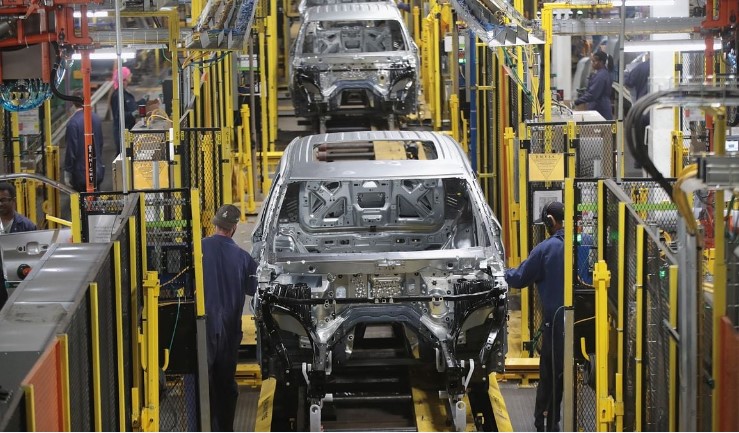Is Construction Productivity Really Lagging Behind?
Originally Published by: Construction Dive — March 22, 2023
SBCA appreciates your input; please email us if you have any comments or corrections to this article.

Reid Senescu
Permission granted by Doxel
Professional engineer Reid Senescu is vice president of product at Menlo Park, California-based Doxel, an artificial intelligence-powered construction technology firm. His research focused on how technology can improve construction team collaboration.
Opinions are the author’s own.
In a recent opinion piece in The New York Times, journalist Ezra Klein rings the alarm that the $1.6 trillion U.S. construction industry has not enjoyed the productivity gains of other industries. He cites a research paper from two University of Chicago professors, which explains that construction productivity has decreased since 1950 while manufacturing productivity, for example, has increased ninefold.
I appreciate Mr. Klein’s alarm as well as his humility in admitting he has no idea how we get construction productivity rising again. Two decades into a career focused on bringing productivity gains to construction, I do have an idea.
But before I get to my idea, let’s consider Mr. Klein’s prime culprit — regulatory “paperwork, and paperwork and more paperwork.” No doubt regulation impacts construction productivity; regulation impacts most industries. While the research paper does not provide data connecting productivity declines to increased regulation, it does note that the construction industry invested 46% less in R&D and software purchases compared to the broader economy in 2020.

A recent opinion piece says that since 1950, construction productivity has decreased while manufacturing productivity, such as at this Ford plant, has increased ninefold. Scott Olson via Getty Images
And, separate research by one of the professors focused on the manufacturing sector explains that information technologies were the main driver for productivity gains in manufacturing from 1994 to 2005.
Why did IT so dramatically impact manufacturing, but not construction? In both construction and manufacturing, IT can improve productivity once information about the real world is transformed into data.
Consider an assembly line producing widgets. The assembly line has sensors that send data to machines to respond in real time and to plant managers who learn of bottlenecks and continuously improve the assembly line. This investment in sensors produces the data that powers IT and drives productivity increases.
Construction data
Applying IT to construction is not so easy. While a factory produces millions of widgets, a construction project is the assembly of millions of different components to produce only a single facility. A single sensor cannot automatically monitor the installation of thousands of square feet of walls or linear feet of ductwork.
And that limitation means that IT is starved of data that would help construction workers and managers gain insights to continuously improve their processes. Thus, until recently, investment in IT has been limited to the design phase and certain aspects of construction administration.
Yet, labor is the greatest cost on any project in the U.S., and IT has had virtually no impact on the productivity of that skilled craftworker laying a brick or welding a beam to a column.
But, that reality is changing. With artificial intelligence and computer vision, leading builders are transforming 360-degree video into near real-time measurements of construction processes. This near real-time reality capture of the construction site acts like sensors in a factory, feeding IT with data that empowers project teams to increase productivity.
For example, a construction superintendent building a retirement community recently used this automated progress tracking technology to identify that a certain duct installation activity was not yet complete on the third floor. Ceilings were set to be installed the next day. Without this insight from technology, the unfinished ductwork would have been covered up by the ceiling trade partner. And, when they later discovered the oversight, they would have had to rip open the ceiling.
That rework would have put a big dent in their productivity. Instead, the AI-powered technology indicated the ductwork was not 100% complete. Augmented with this information, the superintendent applied his expertise in coordinating trades to get the ducts installed right away to avoid the rework.
